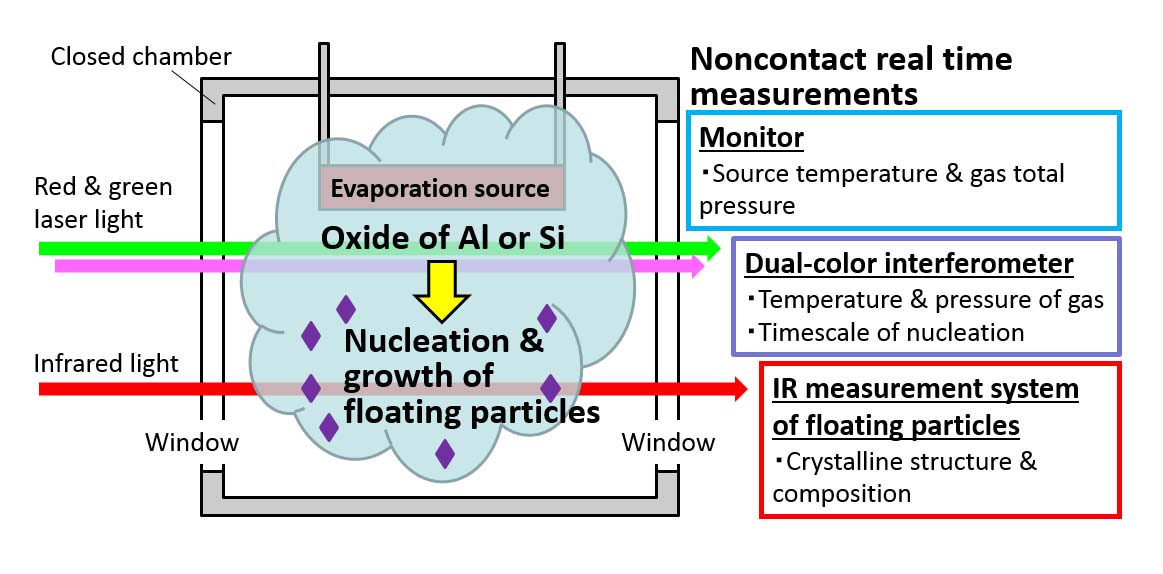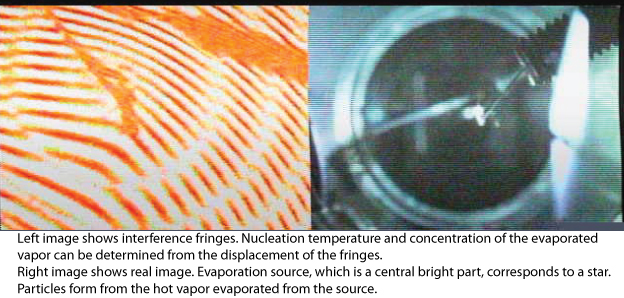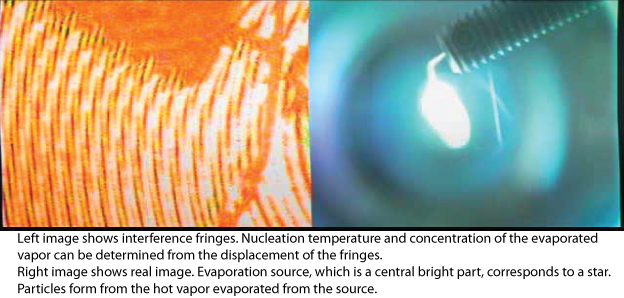Successful Launch of the Sounding Rocket S-520-30 Experiment using a microgravity environment to reproduce star “crumbs”
Research Press Release | September 28, 2015
-
 Nucleation and growth of oxide particles occur in the steady environment, because microgravity condition does not make thermal convection in gas and sedimentation of the particles.
Nucleation and growth of oxide particles occur in the steady environment, because microgravity condition does not make thermal convection in gas and sedimentation of the particles. -
 Example images of the formation of analogue particles of cosmic dust from an aluminum oxide vapor (261s after launch).
Example images of the formation of analogue particles of cosmic dust from an aluminum oxide vapor (261s after launch). -
 Example images of the formation of analogue particles of cosmic dust from a silicon oxide vapor (194s after launch).
Example images of the formation of analogue particles of cosmic dust from a silicon oxide vapor (194s after launch).
| Press Release | ||||||||||||||
|---|---|---|---|---|---|---|---|---|---|---|---|---|---|---|
| Key Points | ・We identified the initial conditions required to form nanoparticles, the basic building blocks of earth-like planets. ・In particular, we searched for conditions where nucleation of oxidized aluminum and silica could easily occur, and we identified the first nanoparticles which govern the evolution of cosmic dust. |
|||||||||||||
| Overview |
The Institute of Low Temperature Science, Hokkaido University (Research representative: Yuki Kimura, Associate Professor) carried out a microgravity experiment in order to “clarify the nucleation process of oxide-based cosmic dust,” using the 2015 primary sounding rocket launched by Japan Aerospace Exploration Agency (JAXA).
Nanoparticles, also called cosmic dust (star crumbs), are formed by gas expelled from celestial bodies. Within this cosmic dust, the nanoparticles which are formed first greatly influence the evolution or alteration of nanometer size solid matter into becoming a planet. Consequently, identification of the first material and understanding the conditions of its formation is the foundation to understanding the material cycle of the universe. The predominant component in this material is oxidized aluminum,1 but this has not been verified by experiments on earth. Moreover, chemical reactions occur on the surface of these nanoparticles, so it is also important to know whether silica,2 which is found in abundance, covers the surface of oxidized aluminum or forms a separate, single nanoparticle. Consequently, the purpose of this experiment was to understand the conditions for the formation of these nanoparticles and to identify which material is formed first, using the microgravity environment during a parabolic rocket flight, and by directly measuring the formation and growth process of nanoparticles from oxidized aluminum and silica vapor (refer to the figure). 1 Oxidized aluminum: Considered to be an originating material of light, which first appears at 13µm around a celestial body that forms oxidized material. 2 Silica: Oxidized silicon. Considered to be the source of the most abundant nanoparticles of oxidized material (silicate: main component of rocks) during nucleation. |
|||||||||||||
| Inquiries |
Yuki KIMURA, Associate Professor, Joint Research Division, Institute of Low Temperature Science, Hokkaido University TEL: +81-11-706-7666 FAX: +81-11-706-7666 E-mail: ykimura[at]lowtem.hokudai.ac.jp |
|||||||||||||
|
Japanese Link |
観測ロケットS-520-30号機打ち上げ成功 微小重力環境を利用した星の”かけら”の再現実験 (低温科学研究所 准教授 木村勇気)(PDF) | |||||||||||||
